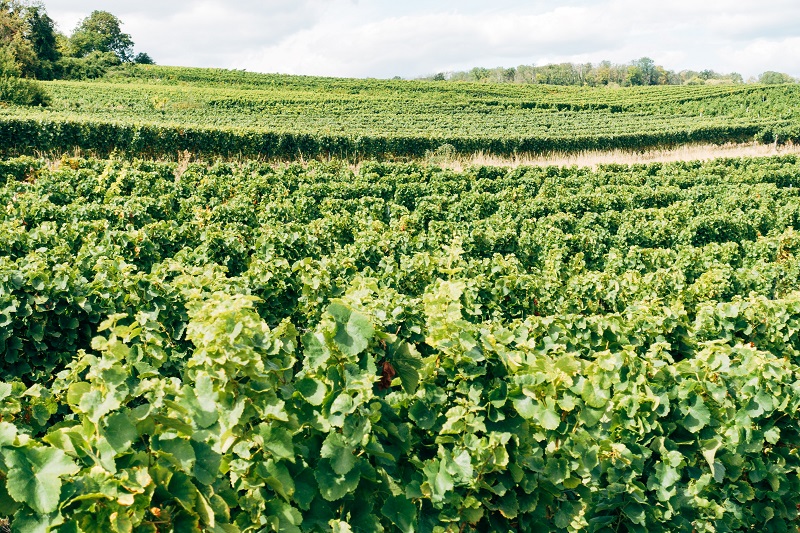Nematicides Know-How: Ways To Help Rid Your Potato Crops of Nematodes
Many potato growers rely on nematicides to protect their crops.
Following is information you should know about both fumigant and non-fumigant methods.
Fumigant Nematicides
Although you apply fumigant nematicides, like 1,3-dichloropropene (Telone II) and metam sodium (Vapam HL), to soil in liquid form, it vaporizes and diffuses through the soil as a gas. They are applied before planting.
Nematodes absorb fumigant nematicides through their body cavities, so ingestion isn’t necessary. They work best when nematodes are exposed to a lethal dose for as long as possible. Control failures often relate to poor dispersion or retention of the fumigant gas or failing to place the product where needed.
Here’s how to maximize dispersion and retention of fumigant nematicides.
Clear the soil of clods and compacted areas before application. Incorporate plant residues thoroughly and lay those on the soil surface flat to permit effective soil sealing. Soil temperature at the depth of application should be between 40°F and 80°F.
Generally, maintain soil moisture close to 80% of available water capacity, but recommendations vary depending on site-specific factors (soil texture, water availability, and weather — especially potential for rain).
Product labels are full of guidance on these points. Follow directions closely to enhance the effectiveness of fumigant applications.
If the fumigant does not contact nematodes, it will not control them.
Pay attention to soil moisture and temperature. The more mobile nematodes, especially stubby root nematodes, will move deep into the soil to avoid conditions that are too hot, cold, or dry.
Applying metam sodium with overhead sprinklers does not usually push the product deep enough to reach nematodes. This method works better for controlling weed seeds and fungal pathogens near the soil surface. Instead, inject fumigants using shank implements with attached spray nozzles at a depth of 14 to 16 inches to contact nematodes. Make sure you use the typically recommended higher rates for targeting nematodes.
Non-fumigant Nematicides
The most commonly used non-fumigant nematicides in potatoes are ethoprop (Mocap), oxamyl (e.g., Vydate, Return), fluensulfone (Nimitz), and fluopyram (Velum Prime). These are granule or liquid products that percolate down through the soil in water. They are soil-applied, pre-plant or at planting, except for oxamyl and fluopyram, which may also be applied to the foliage in-season.
These products aren’t true nematicides because they do not kill nematodes immediately on contact. Instead, they have a “narcotic” effect on nematodes, temporarily paralyzing them, stopping feeding, and delaying egg hatch and molting.
These effects can be lethal if you maintain nematicide concentrations at high levels for an extended time, leading to death from starvation or poisoning. But they can also be reversed if exposure is short and/or at low concentrations.
The efficacy of non-fumigant nematicides largely depends on their solubility in water and persistence in the soil. Products that are highly soluble, like Vydate, Mocap, and (to a lesser extent) Nimitz, are mobile in the soil and distribute effectively to contact nematodes, but they can move out of the root zone with excess rainfall or irrigation.
Oxamyl breaks down rapidly in soil, so it doesn’t last long even when it isn’t leached. This is one reason why an in-furrow application of Vydate at planting must be followed with several foliar applications to achieve full season nematode suppression.
In fact, using a soil degree-day model can optimize the timing of in-season Vydate applications for controlling root-knot nematodes (it involves logging soil temperature at a 6- to 8-inch depth). The model estimates when juvenile nematodes will be present, which is helpful because juveniles are the most susceptible developmental stage of this endoparasite nematode to target with nematicides.
Ethoprop only persists in the soil for about 5 to 6 weeks, so Mocap is not recommended for severe nematode infestations of long season potatoes unless it is followed up with another nematicide.
Growers who opt to apply oxamyl, the most widely used of the non-fumigant nematicides, should know that use instructions differ depending on your region, the species of nematode targeted, and severity of nematode infestations. Study the Vydate or Return label carefully to comply with these important site-specific instructions.
The in-furrow application of oxamyl products is said to be optional, but growers should carefully consider the risks before they opt out of this application. Many nematode species are particularly active when potato roots and tubers are in their early growth phases. In fact, stubby root nematodes may not be effectively controlled if the first oxamyl application isn’t made before tuber initiation. In other words, more foliar applications will not make up for not applying oxamyl earlier.
Disclaimer: Application of a pesticide to a crop or site that is not on the label is a violation of pesticide law and may subject the applicator to civil penalties. It is your responsibility to ensure lawful use and obtain all necessary permits in advance of application.










